► Hybrid technology isn’t always boring
► It can be trouser-troublingly fast, too!
► Here are the fastest hybrid cars ever made
When the Toyota Prius first popularised hybrid technology at the turn of the century, it was synonymous with eco-friendliness and fuel efficiency. But car makers have since recognised the performance potential of electrification – and now, the best hybrid cars are both fast and economical.
Read on for our list of the fastest hybrid cars of 2024.
Hybrid technology isn’t just limited to the sensible car brands anymore, either. Ferrari, Lamborghini and McLaren – the most devout acolytes of the church of flaming horsepower – all now sell high-performance hybrid supercars. Most premium car manufacturers also have a fast plug-in hybrid model occupying the top spot in their model ranges.
The three cars that sparked the performance hybrid craze were the McLaren P1, Porsche 918 Spyder and Ferrari LaFerrari. They were among the first hypercars to prove that an electric motor could be used to plug holes in a petrol engine’s torque curve and more effectively tear the driver’s face off. The McLaren and the Porsche even demonstrated a glimmer of environmental awareness by offering limited electric-only ranges.
The most prestigious manufacturers with the richest racing pedigrees have also now taken to borrowing the hybrid technology from their Formula One racers and adapting it for use in their road cars. Brands such as Aston Martin, Ferrari and Mercedes are dabbling in the space – and you can read more about their efforts below.
Below, we’ve rounded up the fastest hybrid cars on sale today. We’ve organised them according to their 0–62mph times, which is the industry standard acceleration test. To post a fast time, cars need to have enormously powerful engines and a chassis that’s capable of transmitting that power to the tarmac. Scroll down to browse the list.
The fastest hybrid cars in 2024
Koenigsegg Gemera
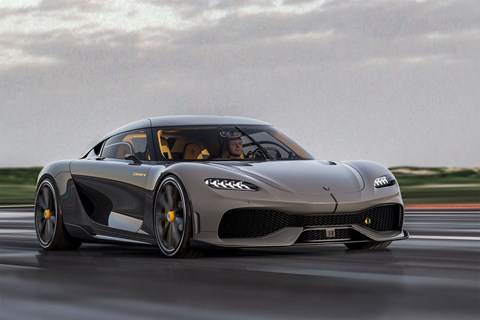
The fastest hybrid available – and it has enough room for your family
Pros: Only astronauts are faster, endless power, four seats
Cons: Come on, it’s a 2300bhp family car. There aren’t any
Only Koenigsegg could build something this silly. The Gemera is a two-door, four-seat V8 hybrid hypercar with 2300bhp and a 0–62mph time of 1.9 seconds. That doesn’t just beat the competition – it decimates it. However, if you find that much power rather daunting, Koenigsegg also offers an ‘entry-level’ version of the Gemera. It has 1,400bhp. From a 2.0-litre three-cylinder petrol engine and a few electric motors. Mental.
It isn’t even that impractical. With a full charge, it can cover up 31 miles on electric power alone. Plus, it has heated and cooled cupholders, roof rack mounts, a self-parking mode, two wireless smartphone chargers and enough luggage space for four carry-on cases.
Read more on the Koenigsegg Gemera
Aston Martin Valkyrie
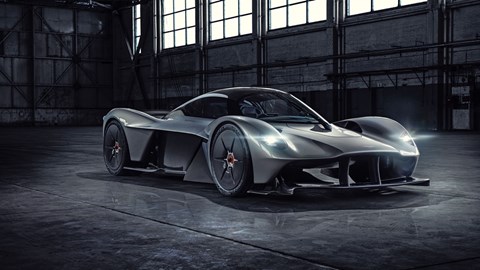
Best hybrid supercar for keen track drivers
Pros: Screaming V12 engine, carbon fibre body, loads of downforce
Cons: Hideously expensive at £2.5 million – and they’re all sold
The Valkyrie is Aston Martin’s first-ever hypercar – and it’s an absolute corker. It’s powered by a naturally aspirated 6.5-litre Cosworth V12 engine and an F1-inspired hybrid system, which delivers a combined output of 1,140bhp. Aston Martin says that’s enough for a 0–62mph time of 6.5 seconds and a top speed of around 220mph.
It was the brainchild of Adrian Newey, the chief technical officer of Red Bull Formula One. Aston Martin sponsors the racing team and it poached some technology from the track, including a KERS-style energy recovery system and the technical know-how on producing real downforce. At 93mph, the weight of the air passing over the car’s body presses it into the tarmac with 1100kg of force – which is welcome, because the Valkyrie is only rear-wheel drive.
Read our Aston Martin Valkyrie review
Ferrari SF90 Stradale
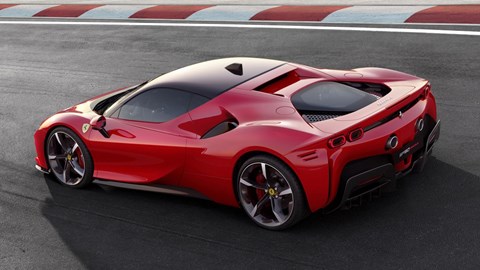
Ferrari’s first real crack at a PHEV supercar is fantastic
Pros: It’s a 1000bhp mid-engined Ferrari with a 15-mile electric range
Cons: 74-litre boot is naff, even by supercar standards
The SF90 Stradale is Ferrari’s latest halo car. It’s named after the company’s 2019 Formula One car and it’s the fastest road car Maranello has ever made. It can sprint from 0–62mph in just 2.5 seconds and reach a top speed of 211mph. And unlike the Aston Martin Valkyrie, you can actually buy one for the comparatively reasonable sum of £450,000.
Its hybrid system mixes a 769bhp 4.0-litre V8 petrol engine with a 7.9kWh battery pack and three electric motors worth an additional 217bhp. The electrical assistance also furnishes the car with four-wheel drive, meaning it isn’t as intimidating to drive as its performance figures would suggest.
Read our Ferrari SF90 review
Mercedes-AMG One
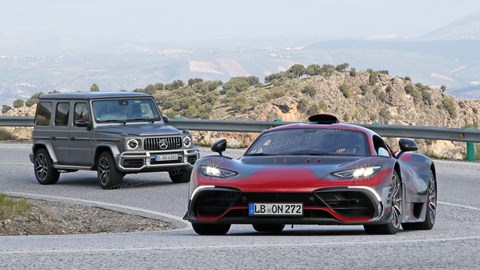
Best hybrid supercar if you want F1-derived technology
Pros: F1 engine, sharp handling, holds Nurburgring production car record
Cons: Endless delays due to temperamental F1 engine
This one has been a long time in the making. The AMG One was announced back in 2017, but it wasn’t until 2022 that Mercedes finally managed to roll the first cars down the production line. The project was fraught with setbacks because Mercedes’s engineers were trying to make a fragile, highly strung F1 engine work reliably in a road car. Mercedes-AMG’s boss, Philipp Schiemer, said the One was the most difficult project his company has ever worked on.
But it’s done now – and it’s pumping out some immense performance figures. Its powertrain blends a 1.6-litre V6 engine with four electric motors for a total output of around 1000bhp. Merc says that’s enough for a 0–62mph time of 2.5 seconds, a 0–124mph time of less than 6.0 seconds and a top speed of more than 217mph.
Read more about the Mercedes-AMG One
Lamborghini Revuelto
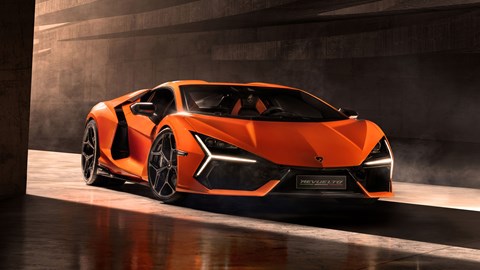
Lambo hasn’t lost its madness by embracing more sensible hybrid power
Pros: 1000bhp hybrid V12 engine, it looks like an orange stealth fighter
Cons: Tiny electric range of around six miles
The Aventador has been put out to pasture and replaced by this – the Lamborghini Revuelto. And, even though it’s moving towards more eco-conscious hybrid powertrains, we’re pleased to report that Lamborghini hasn’t lost its sense of theatre with its new flagship model. The hybrid assistance might improve efficiency slightly, but it’s mainly there to benefit performance.
Lamborghini says the Revuelto can sprint from 0–62mph in just 2.5 seconds and hit a top speed of 217mph. It should handle well, too, as it’s 10% lighter and 25% stiffer than the old Aventador. Each front wheel also has its own electric motor, allowing for electronic torque vectoring. That should make the Revuelto nose into corners more keenly than its predecessor.
Read more about the Lamborghini Revuelto
McLaren P1
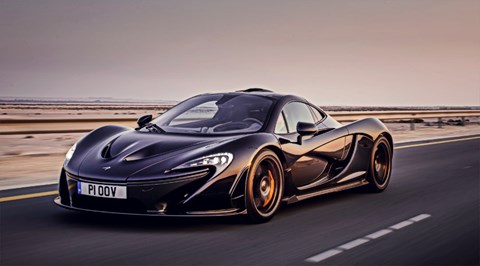
It’s the daddy – the hybrid supercar that kicked off the craze
Pros: Visceral driving experience, savage power and it’s British
Cons: It’s a highly sought-after collector’s item, so it’s pricey
McLaren was one of the first manufacturers to launch a hybrid hypercar back in 2013 – and it still impresses today. The P1’s 903bhp V8 hybrid powertrain has enough poke for a 0–62mph time of 2.8 seconds. Browse through the other hybrid supercars in this list and you’ll see that most of them have only improved on that time by 0.3 seconds. That’s after a decade of progress, too. McLaren truly was ahead of the curve.
But the P1 is more than just a one-trick pony. Yes, it’s quick in a straight line, but its suspension and brakes are so well-sorted that it’s equally fast in the corners. It also fantastically grippy, thanks in part to its arsenal of aero appendages keeping it glued to the tarmac. And when you’re not on the limit, it settles down to become a comfortable cruiser.
Read our McLaren P1 review
Lamborghini Countach
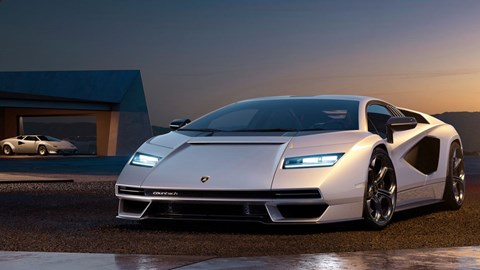
Reborn Countach mixes retro cool with space-age hybrid tech
Pros: Retro looks, brutal acceleration and it has a supercapacitor
Cons: Very harsh ride and it’s a work-out to drive
Lamborghini came over all misty-eyed in 2021 and launched a modern reimagining of the Countach, based on the same platform as the Sian hypercar (which in turn, shares most of its oily bits with the Aventador). Its hybrid system comprises a naturally aspirated 6.5-litre V12 engine and a small electric motor for a combined output of 803bhp. Lambo says that’s enough for a 0–62mph time of 2.8 seconds and a top speed of 222mph.
The Countach’s electric motor isn’t powered by a battery pack, either. It gets its electricity from a supercapacitor, which Lamborghini claims is three times more efficient than a lithium-ion battery pack of the same weight. It all works coherently, though – performance is utterly vicious.
Read our Lamborghini Countach review
Ferrari 296 GTB
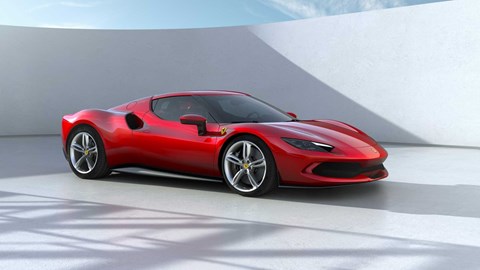
Ferrari’s entry-level supercar still offers world-beating performance
Pros: Lightning quick, surprisingly controllable and very responsive
Cons: Less responsive in the wet, slightly lumpy ride
The 296 GTB is Ferrari’s entry-level supercar. However, it still has 819bhp and a 0–62mph time of 2.9 seconds. It opened a new chapter for Ferrari when it was launched as, unlike the old 458 and 488, it has a 2.9-litre V6 in place of the usual V8. But we think that change benefits the car wonderfully.
It’s so much more agile than its closest rival, the McLaren Artura. The 296 noses into corners far more keenly and changes direction with the same eagerness as an agitated housefly. It even sounds great, snarling towards the redline accompanied by a symphony of brassy parps and turbo whistles. And when you’re done sliding around like a hooligan, it’ll silence its howling engine and saunter around on emissions-free electric power like an evangelistic eco-warrior for around 15 miles.
Read our Ferrari 296 GTB review
McLaren Artura
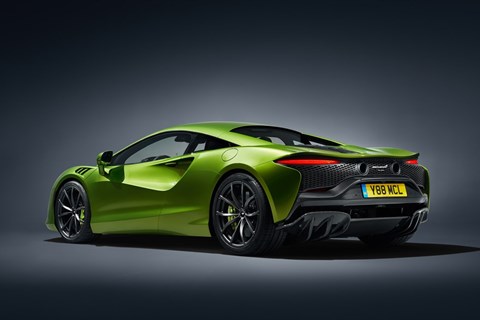
Best hybrid supercar that you can drive everyday
Pros: Frighteningly fast, very stable, comfortable
Cons: Understeers a bit, doesn’t sound particularly special
The Artura is the successor to the McLaren 570S – and, although it retains some of that car’s styling cues, it’s clean-sheet design. Being a McLaren, it’s peppered with clever, overly engineered touches such as hot-formed aluminium panels (which allows large components like the rear clamshell to be made in one solid piece of metal), loads of driver assistance features and a stiffer carbon tub.
It also has a brand-new lightweight V6 hybrid engine with a combined output of 671bhp. That’s enough for a 0–62mph time of three seconds flat and a top speed of 205mph. It also retains the same sophisticated ride quality as its predecessor, although that means it’s a little less track-biased than it could be. Still, that’s no bad thing. It just means you can better enjoy it on the road.
Read our McLaren Artura review
Ferrari LaFerrari
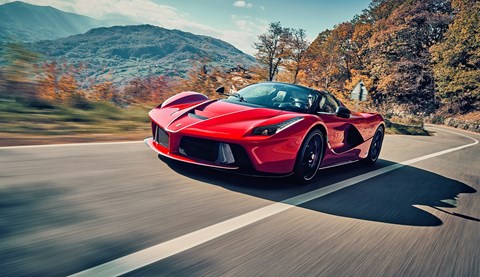
The LaFerrari’s hybrid tech isn’t that green, but it sure is exciting
Pros: Sonorous V12 engine, rapid acceleration, rather controllable
Cons: Doesn’t have an EV mode, Ferrari had to deem you worthy of one
The rather egotistically named Ferrari LaFerrari was Maranello’s answer to the McLaren P1. However, Ferrari was obviously working on the assumption that more is more – so the LaFerrari has a 6.3-litre V12 hybrid engine with 950bhp. No paltry V8 engines here. And, unlike the McLaren, the Ferrari is a self-charging hybrid rather than a plug-in hybrid.
That much power delivers a 0–62mph of less than three seconds and a top speed on the far side of 217mph. It’s a lot angrier than the McLaren, too – the acceleration borders on painful and it can build speed as quickly as Ferrari’s F1 cars of the day. We found it to be surprisingly controllable, though. It’s not much more intimidating than a 458 and the chassis is balanced enough to give you the confidence to switch off the traction control and slither around like Ryan Tuerck.
Read our Ferrari LaFerrari review
Why are manufacturers bothering with hybrid supercars?
We know, it seems rather strange for car brands to be forging on with hybrid power when the fastest electric cars can already monster every vehicle on this list in a straight line. But the hybrid supercars here aren’t all about speed – they’re about sound, too.
Electrification allows manufacturers to balance the aural sensation of a classic supercar against their ever-growing environmental responsibilities. Supercar manufacturers are taxed on their cars’ CO2 outputs (like all car makers) – and hybridisation reduces CO2 emissions by just enough to keep their petrol engines commercially viable. What’s more, screaming petrol engines are a huge part of the appeal of companies such as Ferrari and Lamborghini.
What’s the fastest diesel hybrid car?
Unsurprisingly, there aren’t many new diesel hybrid cars on sale. Volkswagen’s dieselgate scandal and growing concern over the engine’s particulate and NOx emissions sparked a witch hunt – and lots of manufacturers have since purged diesel engines from their line-ups in favour of petrol plug-in hybrid alternatives. They’ve basically disappeared from the small car market, too.
Audi, BMW and Range Rover all sell mild hybrid diesel engines, but Mercedes is the only manufacturer that’s gone all-in with a diesel PHEV. The company’s 302bhp 300 de powertrain is available in the GLC and GLE, but the fastest car with the powertrain is the outgoing E-Class. It can sprint from 0–62mph in 5.9 seconds, which pales in comparison to the supercars in this list. It’s not bad for an executive saloon, though.
Luke Wilkinson is a Senior Staff Writer for the Bauer Automotive Hub. He writes news, reviews and best of pages for both CAR magazine and our sister site Parkers.